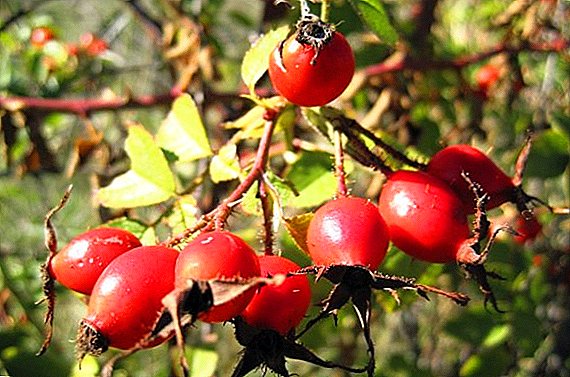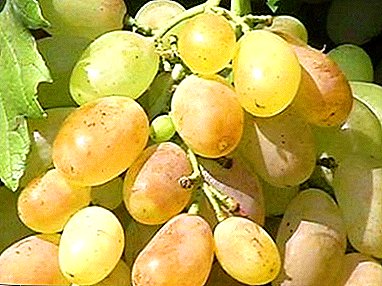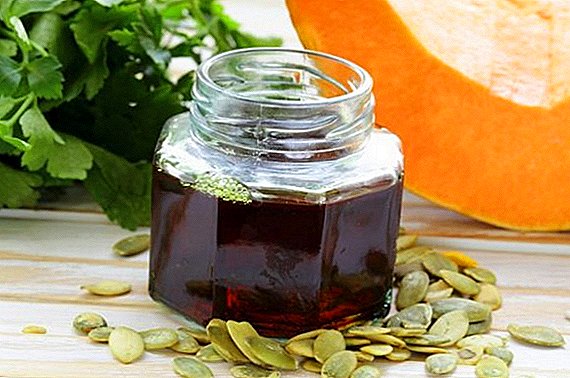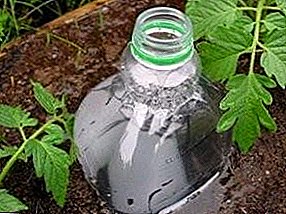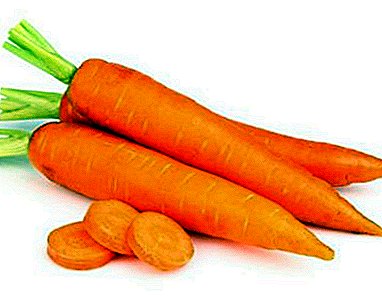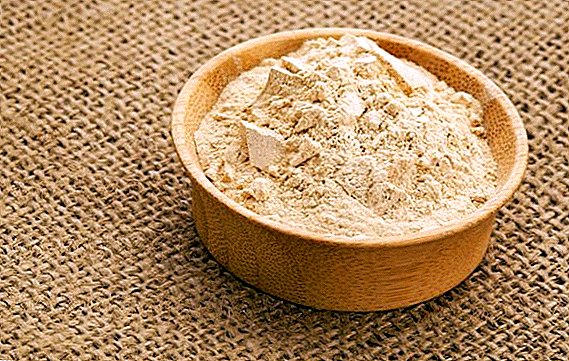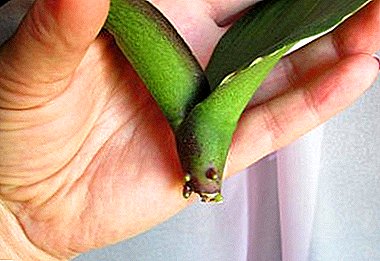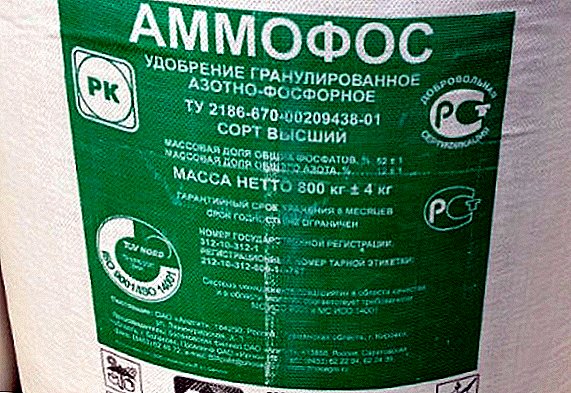 When choosing feedings, farmers and gardeners proceed from the price / quality ratio. Therefore, when buying try to choose a universal and effective composition. Ammophos-type mineral fertilizers are in good demand, and today we will look at how this mixture is useful.
When choosing feedings, farmers and gardeners proceed from the price / quality ratio. Therefore, when buying try to choose a universal and effective composition. Ammophos-type mineral fertilizers are in good demand, and today we will look at how this mixture is useful.
The composition of mineral fertilizers
The composition of ammophos consists of two main ingredients: monoammonium and diammonium phosphate. The so-called ballast substances are not contained here.
In industrial conditions, ammophos is obtained by adding ammonia to orthophosphoric acid. After that, a substance rich in phosphorus (52%) and enhanced with ammonia (12%) comes out. Specialists refer it to soluble phosphates. This ratio is considered the "gold standard" for ammophos, and is achieved only if technology is observed. Some say that there is not enough nitrogen (only 13%). But this composition is used primarily as a phosphoric feed, and nitrogen is needed only as a background element.
Important! Fertilizers also have such characteristics as phosphate digestibility. In a quality product, this figure will be at least 45%. If a lower percentage is specified -from technology could and move away.This tool is sold in the form of granules and at a price quite affordable.
How does phosphate in plants
Ammophos, having such a fertilizer composition, is distinguished by its beneficial properties. If you make it, following the instructions, the results will be as follows:
- rhizome development;
- increasing the resistance of the plant to weather factors and diseases;
- yield improvement;
- more delicate flavor (especially berries);
- increase the shelf life of collected products.

Instructions for use of ammophos
Ammophos, like any fertilizer, has its own characteristics, which is associated with its use.
It can be used both as a means for the main application and as a feed. At the same time, ammonium nitrate or another nitrogenous agent is often added in equal shares, which increases the yield by 20–30%.
Did you know? The idea of using mineral fertilizers was first voiced by Justus Liebig in 1840. But contemporaries simply ridiculed the chemist, it even reached the cartoons in the newspapers.Experienced gardeners know that much depends on the preparatory work. Therefore, ammophos as a “base” is added even when digging (spring or autumn), at the rate of 20-25 g / sq.m for the “cultural” section or 25-30 for just taken into circulation. For greenhouses, this amount is doubled, contributing to potash or nitrogen compounds.
The scheme of seasonal dressings is as follows: between the rows with an interval of 10 cm, holes are made by 5-8 cm. The same 10 cm are left to the plants.
When planting seedlings in the wells throw 0.5-1 g per meter and mixed with the soil.  In early spring they actively use the solution. In a large container (usually a barrel), granules are poured and mixed with water in 1/3 proportion. After allowing it to infuse for a couple of days, it is picked up, and a precipitate is visible on the bottom. Note that this is a popular recipe, and for each culture, it is better to adhere to the doses and processing methods indicated on the package.
In early spring they actively use the solution. In a large container (usually a barrel), granules are poured and mixed with water in 1/3 proportion. After allowing it to infuse for a couple of days, it is picked up, and a precipitate is visible on the bottom. Note that this is a popular recipe, and for each culture, it is better to adhere to the doses and processing methods indicated on the package.
But there is one thing that some people forget: ammophos should not be poured under all the plants in a row. Many of the garden and horticultural crops require more saturated superphosphates. How to make already purchased pellets - read on.
Important! Lay the ammophos "with the reserve" is not desirable - it will have a bad effect on growth and yield.
Vegetable
It happens that when digging for the winter or in early spring, the summer resident has not yet decided what exactly will grow in this area. If you want to plant vegetables, then fall asleep 20-30 g / sq. m, that is, weave takes 2-3 kg. When feeding, try to lay fertilizer, the standard dose at the same time within 5-10 g / m.
Plants take phosphates differently. For example, any method of application is suitable for onions (only when digging up, the concentration is reduced to 10-20 g / m2). For carrots feed is more favorable (at least 7 g per running meter). 
Roots
When planting any beets per meter row throw on 5 g. So, the future fruits will be more juicy.
In the case of potatoes, the granules are placed directly in the wells, 2 g each. This helps not only to increase yields, but also to collect starch.
Dosage during digging will be less than for vegetables (from 15 to 25 g / m2). That is, the same area will take a maximum of 2.5 kg.
Did you know? In the nineteenth century. The main suppliers of saltpeter were Chilean companies, but in the early years of the 20th century it became clear that its stocks would quickly run out of such consumption. And then the scientists began to work.
Fruit
With such cultures, everything is simple - you need the same amount as for vegetables. However, if the soil is quite saturated, then the concentration when digging can be slightly reduced (up to 15 g / m2). In the spring in the grenade circles trees make the same amount.
For poorer soils take 30 grams per "square". Feeding is standard, in the same quantities as for root vegetables. 
Berry
Such cultures require more careful care, especially for the leaves. In early spring, 20 g / m2 should be added under the shrub, but together with nitrogen-potassium compounds.
And in order not to overfeed tender plants, half as many granules are sprinkled into the aisles (maximum 5 g per linear meter).
Phosphate fertilizers, including ammophos, in such cases are used more than once per season. Take grapes. In spring, the soil under the vine is treated with a solution (400 g / 10 l of water). The leaves feed in 10-15 days, but with a weak mixture (150 g / 10 l).
Important! Liquid solutions are absorbed much better than dry powders. And the granules in the country are not laid in pre-watered well.
Flowers and lawn grass
The same quantities are used as for fruit plants. There will have to take into account the resistance of the varietal flower to different additives - some have clear contraindications, although ammophos is rare among them. 
Soil is also important for the lawn. A little saline or dehydrated land needs more water. In difficult cases, when the grass may die, add an extra 2-3 grams, but no more.
Benefits of mineral fertilizer
Due to its properties, ammophos has several advantages over superfsofatami:
- suitable for feeding and main feeding;
- better absorbed and fixed in the ground;
- when respecting the concentration is safe for seedlings;
- can be used for processing cereals.

Precautions when working
Work with fertilizer necessarily carried out in gloves. Neglect the respirator is also not worth it. Clothing should be tight and closed so that the composition does not fall on the skin. Wash your hands after handling.
Did you know? The first synthetic ammonia plant began operations in 1910. Production was established in the German city of Oppa. During World War I, this enterprise calmly covered the needs of farmers, while the sea routes in Chile were blocked by the enemy.If the fertilizer gets into your eyes, you should immediately wash them with soap and water. Cases of swallowing are rare, they give several glasses of water, thereby provoking vomiting. In more difficult situations, you will have to call a doctor.
In windy weather it is better to postpone such work.
We reveal the subtleties of using such fertilizers as "Bud", "Kvadris", "Corado", "Hom", "Konfidor", "Zircon", "Prestige", "Topaz", "Fufanon".
Terms and conditions of storage
Ammophos packaged in bags is stored from 9 months to 2 years. Carefully read the information on the packaging. Any dry places will be suitable for storage, the temperature regime does not matter.
The only thing - on the container should not get moisture. Yes, the granules themselves are gyroscopic and a few drops will not harm. But if you put a bag in a wet basement and forget about it for the whole winter, then the fertilizer can lose its qualities, and the manufacturer has nothing to do with it. We learned the strength of this composition, and how to apply it in the country. We hope that with this knowledge our readers will be able to achieve high yields.


